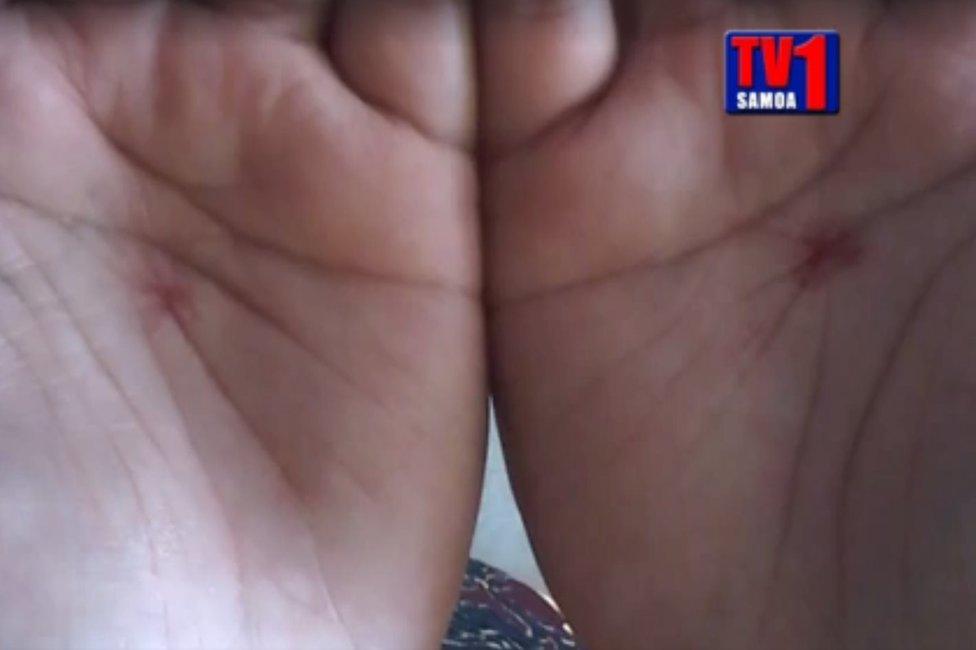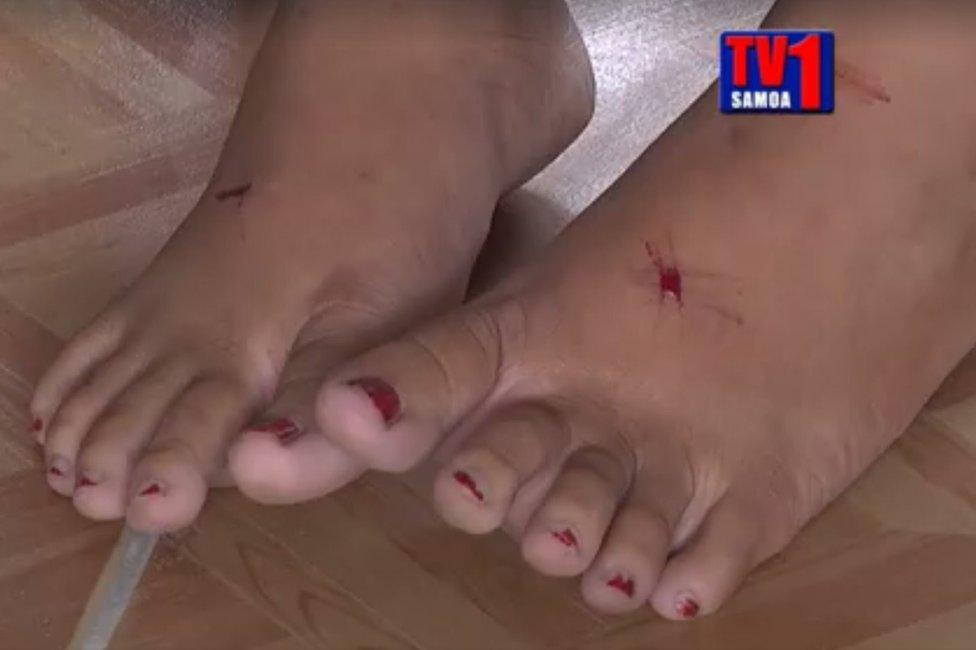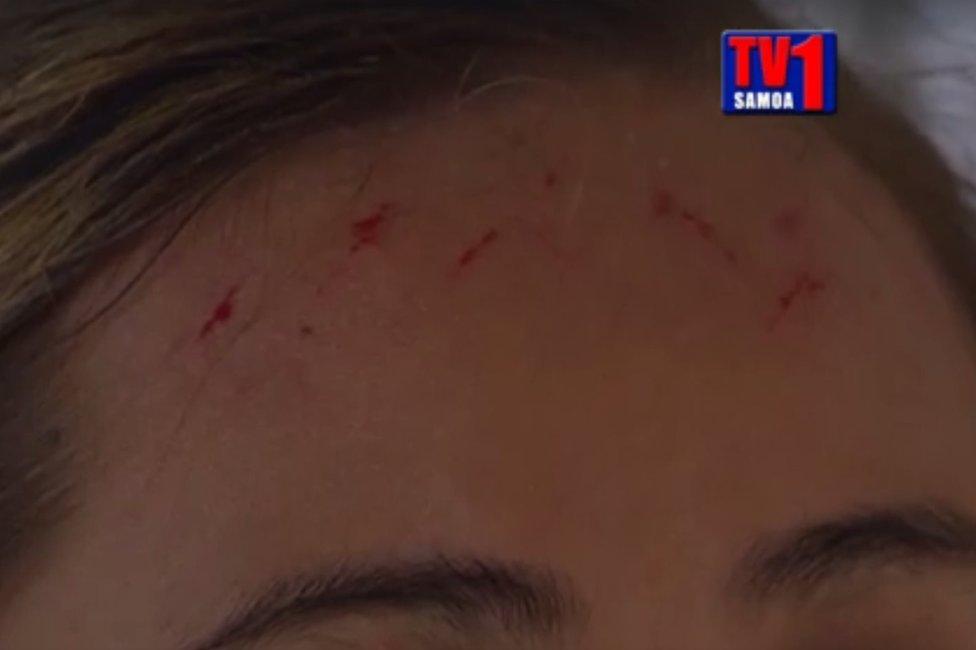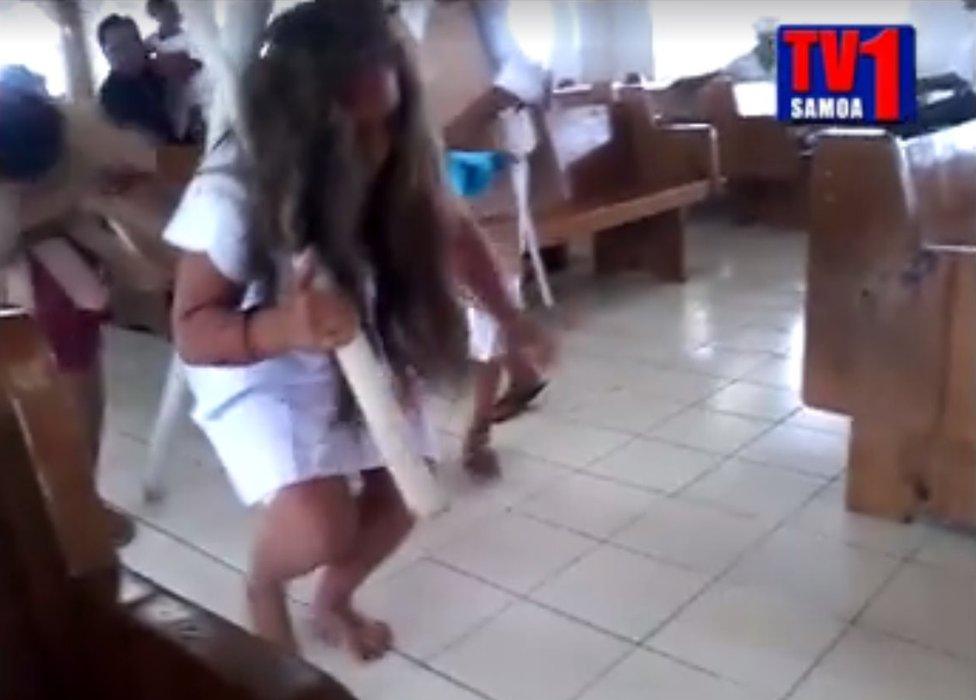Samoa divided over local woman's stigmata claims
- Published

Ms Opapo claimed in a television interview that she had stigmata
A Samoan woman's claims that she has stigmata has gripped the Pacific Island nation in recent weeks.
Toaipuapuaga Opapo, 23, says bleeding wounds appeared on her body while she was at church on Good Friday. Her story, widely covered in the largely Christian country, has triggered a national debate, and even comment from the prime minister.
Stigmata are marks or bleeding similar to that of Christ at the crucifixion. Believers say they appear miraculously though there is much scepticism around the claims.
Ms Opapo said the wounds appeared on her palms, feet, forehead and her side while she was performing as Jesus Christ in a church play re-enacting the crucifixion last month.
Footage of her at the church broadcast on television shows what appears to be blood running down her arms, and later emerging from her side.
In a subsequent television interview , externalwith TV1 Samoa, she claimed to be spontaneously bleeding while on camera. The station said it could not independently verify her claim.

Ms Opapo showed the TV station marks on her hands
"I'm just another human being… but my body has been used as a reminder because God knows that the faith of his servants are dying," she said in the interview, also claiming she had a "sickness" for the past three years which caused her to have visions.
Her church, the Congregational Christian Church of Samoa (CCCS), told the BBC that if it really was stigmata it would be a "unique occurrence".
"Stigmata is not part of the Reformed tradition of which CCCS is a part. We are therefore undertaking our own investigations into the matter," said general secretary Afereti Uili, who added that the church would release a statement later.

What are stigmata?
Phenomenon where believers say they have marks or bleeding similar to that of Jesus Christ's body from crucifixion.
It is a largely Catholic phenomenon, with very few non-Catholic examples recorded.
Catholics believe it is a manifestation of a deep empathy with Christ's suffering.
Famous stigmatics include St Francis of Assisi - the first recorded case dating back to the 13th Century - and St Pio of Pietrelcina.
Researchers say some cases may be hoaxes or self-inflicted wounds, while some may have psychosomatic causes.

Her story has been greeted with both scepticism and joy in Samoa.
Some, including the country's Catholic Prime Minister Tuilaepa Sailelel Malielagaoi, have called it a miracle.
He was quoted in the Samoa Observer newspaper, external as saying: "We should be happy about these events... if it happens to someone, it means they are holy."

She also showed what appeared to be bleeding spots on her feet

She showed marks on her forehead which appeared to mimic the imprint of a crown of thorns
Others, however, have accused her of manufacturing a hoax.
"Still can't get my head over this. Those (are) inflicted wounds. She needs medical attention (and) counselling!" said one commenter on TV1 Samoa's Facebook page.

Ms Opapo was acting as Jesus Christ in a church play when she appeared to show signs of stigmata with blood running down her arm
Divide across faiths
One reason for the split in opinion may be that many Samoans are Protestant Christians, while stigmata has been a mostly Catholic phenomenon. Ms Opapo is a Protestant.
Merita Huch, a news editor with TV1 Samoa, told the BBC: "This is a huge thing, it's dividing the whole country across the faiths."
"The Catholic Church has since been taking care of her, they have held a Mass for her. There have been villages who have invited her as they want to meet and touch her.
"But there are other churches who are warning people not to believe it, saying it is the work of the devil... Some people say she was possessed by an old boyfriend's spirit."
Religious studies Professor Paul Morris told the Australian Broadcasting Corporation, external that the case could be a response to "the tremendous pressure" the CCCS - the largest in Samoa - has been under from other churches in recent decades.
Another possible explanation for the case was "psycho-somatic, that intensity of identification... where a young woman or man identify with Jesus to an extreme degree", he was quoted as saying.